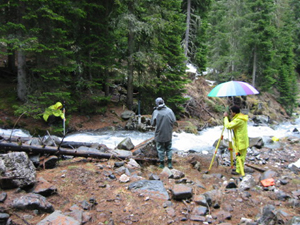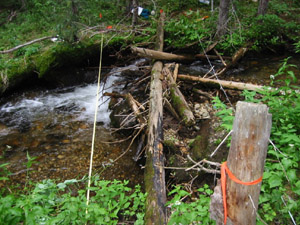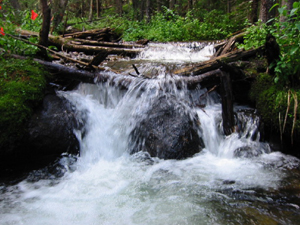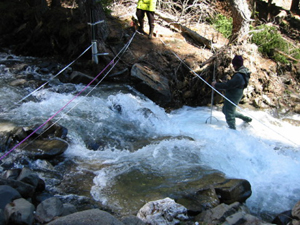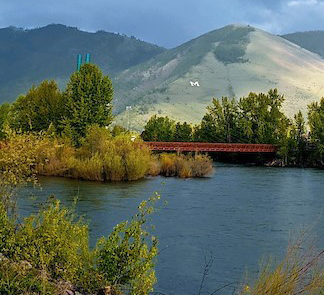Steep Channel Processes
I also study flow hydraulics and morphology of step-pool stream channels, which are high-gradient channels in which channel-spanning steps formed by boulders, woody debris, or bedrock alternate with pools. My work seeks to increase understanding of basic physical processes in these channels and to elucidate how these channels differ from low-gradient stream channels. Such knowledge is critical for analyses of sediment transport, aquatic habitat, stream restoration, and other resource management issues in low-order mountain watersheds.
Flow resistance dynamics in step-pool channels
My doctoral research examined flow resistance dynamics in step-pool channels. Using a laboratory flume configured to resemble a step-pool channel, I investigated several questions: (1) What are the dominant controls on flow resistance in step-pool channels, (2) How does large woody debris (LWD) influence hydraulics in step-pool channels, and (3) How is flow resistance partitioned among LWD, steps, and grains? Approximately 400 flume runs were completed using a factorial experimental design in which variables contributing to flow resistance in step-pool channels were manipulated, including LWD configurations (density, orientation, piece length, arrangement), step geometry, discharge, bed slope, and presence versus absence of steps and grains. The experiments employed a 10-m long, 0.6-m wide recirculating flume at Colorado State University's Engineering Research Center. [PDF 1] [PDF 2]
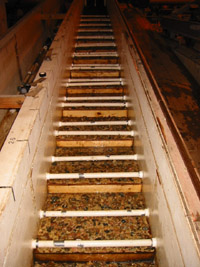
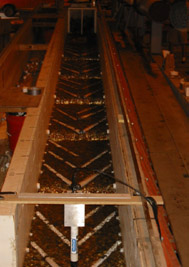
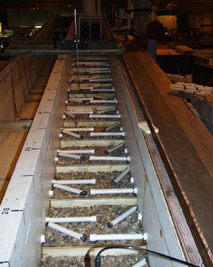

Velocity and turbulence characteristics in step-pool channels
My research also investigates spatial and temporal variations in velocity and turbulence characteristics in step-pool channels in order to provide insight into patterns of energy dissipation and flow structure in these channels. This has entailed detailed field measurements of three-dimensional time-averaged and turbulent velocity components using a SonTek FlowTracker Acoustic Doppler Velocimeter (ADV). Primary field sites have included East St. Louis Creek, Colorado, and the Rio Cordon, Italy, which differ in terms of climate, sediment supply, and land use. Collaborators on this work include Ellen Wohl (Colorado State) and Francesco Comiti (University of Padua, Italy). [PDF 1] [PDF 2]
Other previous work on steep channels:
- Linkages between hydraulics, morphology, and benthic communities in high-gradient streams [PDF]
- Downstream hydraulic geometry of mountain streams [PDF]
